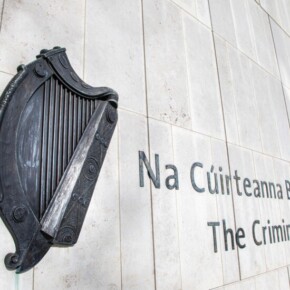Remembering the Mail Boat Leinster
Dublin People 07 Sep 2014THE RMS Leinster, one of Ireland’s most tragic ships, is also one of her least known.
The story of its final voyage has been all but lost beneath the waves. Yet the sinking of
‘Dublin’s Titanic’ remains the single greatest loss of life in the Irish Sea.
Built in 1897, the Leinster was part of a fleet of four mail boats owned by the City of Dublin Steam Packet Company. Asserting itself as an Irish company, the ships were named after Ireland’s four provinces, Ulster, Munster, Connaught and Leinster.
‘The Provinces’, as the fleet was known, were recognised as some of the fasted vessels on the Irish Sea and were capable of 24 Knots (44 km/h).
The Leinster sailed between the Carlisle Pier in Kingstown Harbour (now Dún Laoghaire) and Holyhead in Wales.
The steamship operated all year round and at practically all hours of the day, carrying the mail between Ireland and Britain.
The letters and parcels were sorted on board by workers from the Dublin Post Office. While the primary function of the fleet was the postal service, the ships also ferried passengers to and from Ireland, providing the company with a lucrative source of income.
At the outbreak of the Imperial War, this high speed fleet was recognised as a valuable asset by the British authorities.
It was decided to arm the ships with a 21-pounder deck gun and two single guns and bring them into the war effort. From then on, along with its cargo of post and civilian passengers, the mail boats would be forced to carry British military personnel and munitions.
These once elite civilian vessels were now an integral part of the British war machine and, as a result, became a target for the Imperial German Forces.
Alert to the threat of the Germans, the Royal Navy had blockaded much of the English Channel and the majority of maritime traffic travelled under the protection of navy vessels in convoy.
These measures were not extended to the Irish Sea, however, and the mail boats were expected to rely on their speed and their deck guns for protection.
As a result, German submarines, known as U- boats, packed into the Irish Sea, and the area became known as U-Boat Alley.
Under such circumstances it wasn’t long before the City of Dublin Steam Packet Company felt the effects of the war.
In 1915, the Connaught was commandeered by the British War Office for the speedy transportation of troops and munitions.
On March 3, 1917, the Connaught was attacked by a German U-boat while sailing between Le Havre and Southampton and sank.
At 08.53 on October 10, 1918, the Leinster left Dún Laoghaire.
Under the Command of Captain William Birch, she sailed into a heavy swell and rough seas. Birch’s crew was made up of locals from both Dún Laoghaire and Holyhead. Also onboard were 22 Post Offices workers and hundreds of civilian passengers.
Records show that there were also almost 500 Allied military personnel on board, serving with forces from Britain, America, Canada, Australia and New Zealand.
In total, the Leinster carried 771 people – 77 were crew and 694 passengers.
Unbeknown to all on board, a German U-Boat, U-123 under commander Ramm, had arrived off the Kish the night before and was waiting for the Leinster.
At 10am as the Leinster sailed into range of the U-boat, passengers on deck saw a torpedo coming from the port side and pass the bow of the ship. The Germans had opened fire and missed.
As panic gripped the passengers, the Germans fired again. This time they found their mark, scoring a direct hit on the mail room.
Acting quickly, Captain Birch turned the Leinster for home, hoping to get his passengers safely to Dún Laoghaire.
However, the Germans fired again hitting the mail boat a second time, causing a huge explosion. The ship began to sink rapidly. Many of the passengers were killed in the explosions and more went down with the ship.
There was international outcry at the incident with Germany condemned from all quarters. Many people in Ireland also felt a deep hostility to Britain, believing the tragic faith of the Leinster could have been avoided, if she hadn’t been commandeered for the British war effort.
Official figures record that 501 people died in the tragedy. However, new research, particularly by Roy Stokes and Philip Lecane, suggests that the death toll from Ireland’s greatest maritime disaster may actually be higher.
?¢Daithà Ã? Riain is a Dublin based historian with a specific interest in social history and Ireland’s revolutionary period.











